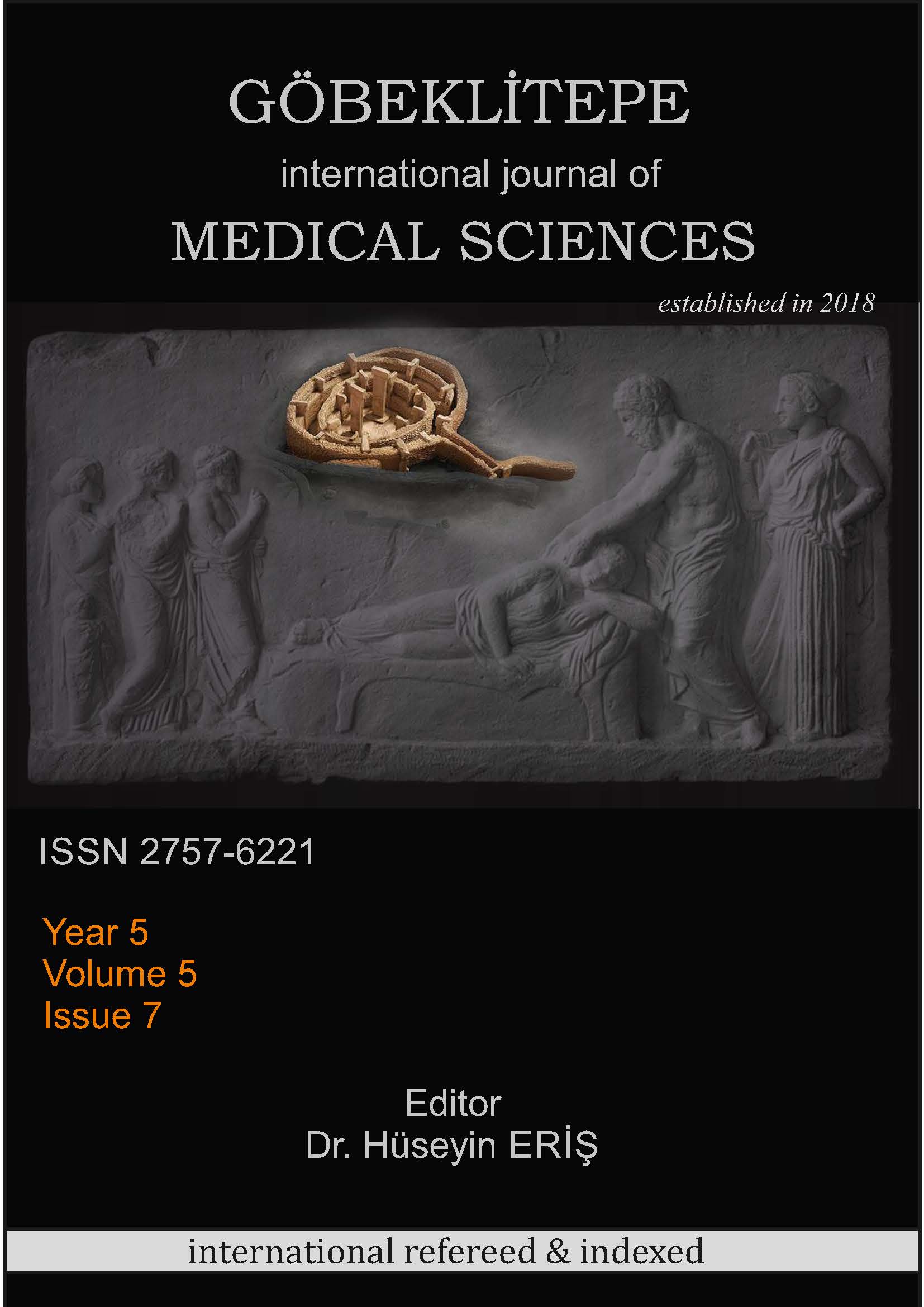Streptozotosin ile İndüklenen Diyabetik Sıçanların Testis Dokusunda N-Asetil-L-sisteinin Oksidatif parametreler üzerindeki Etkileri
DOI:
https://doi.org/10.55433/gsbd.126Anahtar Kelimeler:
diyabet, streptozotosin, N-asetil, sistein, nitrik oksitÖzet
Sıçan testis dokularında streptozosin kaynaklı diyabet modelinde N-Asetil-L-sisteinin (NAC) koruması araştırıldı. Antioksidan parametreler ölçülerek in vivo biyokimyasal mekanizma belirlendi. Sıçanlar rastgele kontrol, diyabet, diyabet+NAC ve NAC olmak üzere 4 gruba ayrıldı. Gece boyunca aç bırakılan hayvanlara tek doz intraperitoneal STZ (60 mg/kg vücut ağırlığı) verildi. Enjeksiyondan önce ve enjeksiyondan 72 saat sonra, bir glukometre ile kuyruk damarından kan şekeri seviyeleri ölçüldü. 250 mg/dL'nin üzerindeki kan şekeri seviyeleri diyabetik olarak kabul edildi. Grup 3 ve 4'teki hayvanlar, diyabet modeli oluşturulduktan sonra dört hafta boyunca herhangi bir tedavi görmediler. Dört hafta sonra, Grup 3 ve 4'teki deneklere 7 gün boyunca IP enjeksiyonu NAC (60 mg/kg, günlük %0.9 NaCl solüsyonunda hazırlanmıştır) verildi. Uygulamalar sonunda tüm hayvanlar sakrifiye edildi ve antioksidan ölçümleri için dokuları alındı. STZ ile diyabetik sıçanların testis dokularında MDA düzeyi yükselirken, NAC tedavisi ile kontrol düzeyine getirildi. Diyabetik grupta GSH ve NOx düzeyi, SOD ve CAT enzim aktiviteleri anlamlı olarak azalmış bulundu. Bununla birlikte, NAC tedavisi bu parametrelerin yükselmesine neden oldu.





